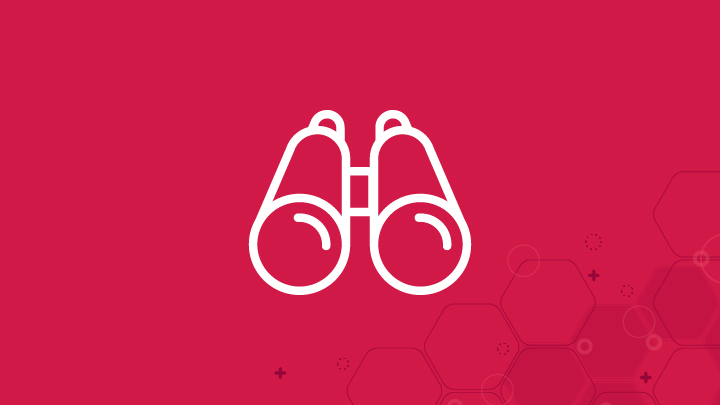We educators are on the precipice to be able to break the mold and do things differently. Within just three years, I predict how we work with kids will look less industrialized and more flexible.
All students come to school with different kinds of needs and we educators continue to try to fit them into all into a box. But we are putting round pegs into the squares. This is changing.
I would hope that in 2020 we see more scenarios where students are getting some of their general information through teachers, and also having experiences. Students should have internships, externships and work so they can try some things out so that before they leave high school they have credentials and real experience.
I see fewer requirements around “clock hours” and “seat hours” and standards and assessments. That doesn’t lessen the high stakes accountability, but by loosening the reins a little bit gives us an opportunity to break the mold.
I see our younger kids just getting much more comfortable with a world that is more about answers and less of them asking questions, instead of us giving answers. We educators are very much in that role, and now we have students who can question and can look in and think and can think critically much younger than probably we anticipated. It seems like that is the only way they will be set up to succeed in life.
Just think about the delta between someone who went to school in the early to late 2000s versus 2017 and that speaks to how fast things are evolving and how much teachers really need to approach their practice with flexibility and a mindset of lifelong learning..be able to be flexible and grow and learn at their own pace and in their practice.
Empowering teachers to drive student learning
That acceleration speaks to the power of that teacher in the classroom and how he or she has to work with that. The teacher has to keep up with the times. That’s a hard job to do. I think tools can help them do that.
At the District Level, we’re constantly challenged to provide teachers with something that they feel they can take away from professional development and use every single day. We give surveys to capture information from our teachers and oftentimes they talk to us about the professional development – they say, “it isn’t relevant to me.”
At Manassas, we have about 700 teachers. About 50 percent of them are in their first three years of teaching. What we administrators struggle with is how to provide opportunities for teachers to get what they need in order to grow in their professional practice.
We see teachers as the key drivers of student learning. As a result, we need to make sure that we are investing in those teachers by personalizing their learning so they can then do the same for the kids. As I look at how to provide kids with the best instructional opportunities the answer is through their teachers.
Being able to personalize learning for the teachers lets us really enhance human capital in the schools. We are investing in our teachers to make sure that we retain them. Here in Manassas we not only have a very young workforce, we have a challenging district in the sense that our work is hard. It’s rewarding but it’s difficult. For us, finding ways to maintain teacher engagement and teacher effectiveness comes through providing teachers with not only benefits that they see as monetary benefits, but also that independent professional growth.
The theory versus practice of adopting technology
Three years ago Manassas City embarked on a one-to-one initiative at our high school, a state initiative that provided matching funding for us to provide laptops to every student in our high school. We started with our 9th and 10th grades and then throughout the school for the next four years.
We had a lot of plans on paper about how we were going to do things and what we were going to do, but I knew that it didn’t really matter if I handed a teacher or a kid a device. If the teachers didn’t know how to access and utilize the devices or change their practice, the experience was going to fail. That realization led me and our professional development coordinator developed a series of what we call “certificates” for teachers to participate.
In theory and on paper it all looked great, as many things do, but what we found in practice is that our teachers didn’t have the right background. We didn’t have enough professional development to equip them to use the devices as effectively as intended. Essentially we just gave kids devices that they were able to take home to access the Internet.
We didn’t create the capacity at the high school to turn around instruction. Where we did a good job though was in coming up with the idea of what we wanted it to look like. Once we had that vision we knew we truly did not have the capacity to carry it out. Our eyes were bigger than the proverbial stomach.
We realized we needed help. We wanted to maintain our goal of achieving this certificate because it really creates those ladders. It gives people something that they can work toward. We knew we wanted to keep that. So we went looking for help and everyone we went to had a prescribed method for how they were going to provide this training before they even knew who we were.
We had a hard time finding someone who would partner with us that could see our vision of certification and who would really personalize professional development for us. We didn’t want an off-the-shelf solution. And so somewhere along the line, my Professional Development Coordinator ran into BetterLesson. What resonates with our teachers is the support they offer. It is a kind of independent support so teachers can really choose how they engage in this process.
Delivering professional development hasn’t changed much. Administrators say, here’s the professional development, here’s why you have to do it, here’s where you have to do it, here’s how you have to do it and here’s how I want to see it measured later on. It is very prescriptive. Where I think teachers have been really positive about our work with BetterLesson’s Design Studios and the one-on-one coaching model is their feeling that it is improving their practice and at a great pace with ideas that they want to improve.
We are control freaks in education and we want to make sure it all goes the right way. So giving teachers a choice is huge. Just like our students, we have teachers that come from so many different walks of life. When they have this opportunity to have a choice, they are positive about it. And I see them articulating that back in the classroom with their students.
Retaining teachers through PD
We’ve put a couple of other metrics into place that helps support funding for choice in professional learning. We give a division engagement survey that gets to how people could be more engaged, happier, and satisfied in their work. The key indicator that continues to come out of those surveys is the idea of professional development that it is personalized and provides choice.
Maintaining high-quality teachers over a long period of time is really important to us. Once we invest in them and we train them, we want to be able to keep them. It’s important to have metrics that say on a large scale that you know your teachers really want this and this is how you might retain them. We live in an environment that is highly competitive. You can go 10 miles down the road and be in a whole different school system and potentially have a higher salary, so this investment in the human capital side of thing helps us in more than just instruction.
In the funding process, I’ve attached this spend to more than just instruction and student achievement. I’ve attached it to technology. We’ve attached that infrastructure piece. We know that technology is an important part of what we do every day and kids need competence skills in that. But in order for them to do that, they need teachers who are able to you know able to utilize that and learn and professional and grow within that technology. So attaching it to technology, attaching it to human resources, and attaching it to instruction has been my strategy along the way because I don’t want it to just sit in isolation.
More in Melissa’s interview with Alex Grodd, CEO of BetterLesson







